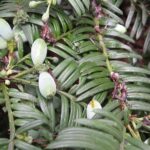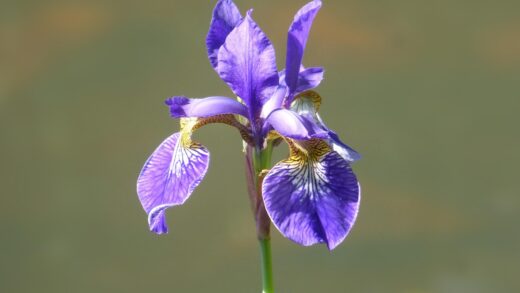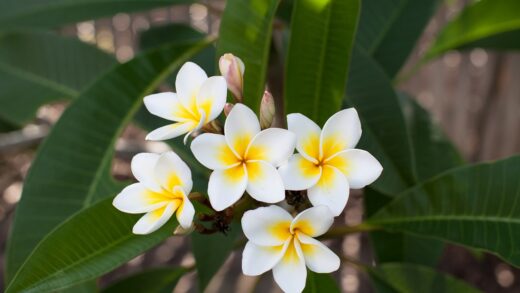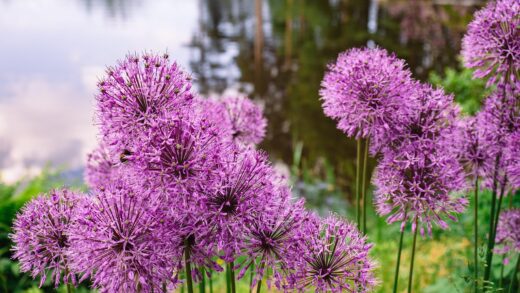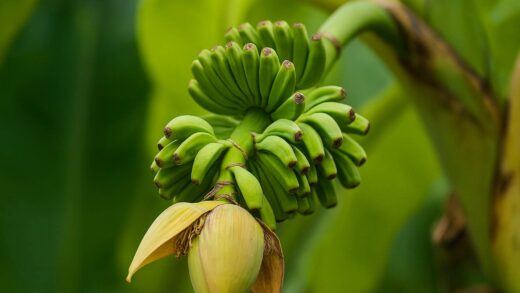To unlock the full, breathtaking potential of a plumeria’s floral display, a thoughtful and consistent fertilization strategy is absolutely essential. While these resilient plants can survive with minimal nutrients, they require specific nutritional support to fuel the energy-intensive process of producing their famously large and fragrant blooms. Understanding the role of key macronutrients, particularly phosphorus, and implementing a well-timed feeding schedule will transform your plumeria from a plant with pleasant foliage into a spectacular flowering specimen. Proper fertilization is the key that unlocks the door to a profusion of vibrant, healthy blossoms throughout the growing season.
The role of macronutrients in plumeria health
Macronutrients are the fundamental building blocks that plants require in the largest quantities for healthy growth, and for plumeria, the primary trio are Nitrogen (N), Phosphorus (P), and Potassium (K). Nitrogen is chiefly responsible for promoting vigorous vegetative growth, meaning the development of lush, green leaves and strong stems. While essential for overall plant health, an excess of nitrogen can lead to a leggy plant with abundant foliage but very few, if any, flowers. Therefore, a balanced approach to nitrogen application is crucial.
Phosphorus (P) is the star player when it comes to flowering. This vital macronutrient plays a direct and critical role in energy transfer processes within the plant, which are essential for initiating bud formation and supporting flower development. A plumeria that is deficient in phosphorus will struggle to bloom, even if it appears healthy otherwise. For this reason, fertilizers formulated specifically for plumerias or other flowering tropical plants are typically characterized by a high phosphorus content relative to nitrogen.
Potassium (K), the third primary macronutrient, is essential for the overall vigor and resilience of the plumeria. It helps regulate water movement within the plant, strengthens cell walls, and improves the plant’s ability to withstand environmental stresses such as drought, temperature fluctuations, and disease. Adequate potassium levels contribute to strong stems capable of supporting the heavy clusters of flowers and ensure the plant’s metabolic processes are functioning efficiently, which indirectly supports a healthy bloom cycle.
Beyond the big three, plumerias also benefit from secondary macronutrients like magnesium and calcium. Magnesium is a central component of the chlorophyll molecule, making it indispensable for photosynthesis, the process by which the plant creates its energy. Calcium is important for cell wall structure and root development. Many high-quality fertilizers will include these secondary nutrients, and supplementing with a product like Epsom salts (magnesium sulfate) can sometimes be beneficial for ensuring deep green foliage and robust growth.
More articles on this topic
Choosing the appropriate fertilizer
The most important factor when selecting a fertilizer for your plumeria is the N-P-K ratio, which is represented by the three numbers on the product’s label. To maximize flower production, you should choose a formula that is high in phosphorus (the middle number) and relatively low in nitrogen (the first number). Ratios such as 10-50-10, 10-30-20, or similar “bloom booster” formulations are ideal for plumerias during their active growing and flowering season. These provide the specific nutritional profile needed to encourage budding over leafy growth.
Fertilizers are available in several different forms, including liquid, granular, and slow-release pellets, each with its own advantages. Water-soluble or liquid fertilizers are fast-acting, as the nutrients are immediately available for the plant to absorb. This makes them excellent for providing a quick boost and for regular feeding schedules. Granular fertilizers are applied to the soil surface and release their nutrients more slowly as they are watered in. Slow-release fertilizers are coated pellets that break down over an extended period, providing a steady supply of nutrients for several months with a single application.
Many experienced growers find that a combination of fertilizer types yields the best results. For example, you might incorporate a slow-release, balanced fertilizer into the soil mix at the beginning of the growing season to provide a baseline of nutrition. This can then be supplemented with regular applications of a high-phosphorus, water-soluble fertilizer every two to four weeks during the peak growing months to specifically target and promote heavy blooming. This dual approach ensures both long-term health and short-term flowering performance.
It is also worth considering organic versus synthetic fertilizers. Organic options, such as fish emulsion, bone meal, and kelp meal, release nutrients more slowly as they are broken down by microorganisms in the soil, which can help prevent fertilizer burn and improve overall soil health. Synthetic fertilizers provide nutrients in a form that is immediately available to the plant and offer more precise control over the N-P-K ratio. Both can be effective, and the choice often comes down to personal preference and gardening philosophy.
More articles on this topic
The fertilization schedule and application
The timing of fertilizer application is just as important as the type of fertilizer used. You should only feed your plumeria during its active growing season, which typically runs from spring through late summer. Begin fertilizing in the spring as soon as you see the first signs of new leaf growth emerging from the branch tips. This initial feeding helps to replenish the plant’s energy reserves after its winter dormancy and provides the fuel needed for the initial flush of growth.
Throughout the spring and summer, a consistent feeding schedule is key to sustaining growth and encouraging continuous blooming. If you are using a water-soluble, high-phosphorus fertilizer, a typical schedule would be to apply it every two to four weeks. For granular fertilizers, you might apply them every four to six weeks, following the product’s specific instructions. It is crucial to be consistent with your chosen routine to provide a steady stream of nutrients when the plant needs them most.
As autumn approaches and the days get shorter, you must cease all fertilization. Continuing to feed the plant into the fall can encourage new, tender growth that will not have time to harden off before the onset of cooler temperatures, making it highly susceptible to cold damage. Stopping fertilization allows the plant to naturally begin its transition into dormancy. Do not fertilize the plant at all during its winter rest period, as it is not actively growing and cannot use the nutrients.
When applying fertilizer, it is imperative to follow the package directions carefully to avoid over-fertilization, which can burn the plant’s delicate roots. Always water the plant thoroughly before applying a liquid fertilizer; never apply it to dry soil, as this can concentrate the salts and cause severe root damage. For granular types, spread the recommended amount evenly over the soil surface and then water it in well. Reducing the fertilizer to half-strength is a safe practice, especially for younger plants or if you are unsure about its sensitivity.
Recognizing nutrient imbalances
A common sign of a nutrient imbalance is a change in the color and health of the leaves. If a plumeria is receiving too much nitrogen, it will often produce an abundance of large, dark green leaves but few or no flowers. The plant may also appear “leggy,” with long, stretched-out stems. This is a clear indication that you should switch to a fertilizer with a lower nitrogen content and a higher phosphorus content to redirect the plant’s energy from vegetative growth to flower production.
Conversely, a phosphorus deficiency will manifest primarily as a lack of blooms. The plant might look perfectly healthy, with plenty of green leaves, but it will fail to produce an inflorescence (the flowering stalk). If your mature plumeria is in full sun and is otherwise healthy but not flowering, a lack of phosphorus is a likely culprit. Initiating a feeding regimen with a high-phosphorus bloom booster fertilizer is the most direct way to correct this specific issue.
Yellowing leaves (chlorosis) can point to several different nutrient deficiencies. A lack of magnesium, for instance, often appears as yellowing between the leaf veins while the veins themselves remain green. A nitrogen deficiency can cause a general yellowing of the entire leaf, typically starting with the older, lower leaves. While overwatering is a more common cause of yellow leaves, if you are confident your watering is correct, you should consider a potential nutrient deficiency and use a balanced fertilizer that contains micronutrients like magnesium and iron.
Stunted growth, where the plant seems to have stopped growing or is producing very small new leaves, can also be a sign of a nutrient issue. This could be due to a general lack of overall nutrition or a deficiency in a specific micronutrient. It can also be a symptom of fertilizer burn, where excessive fertilizer salts have damaged the roots, impairing their ability to absorb any nutrients at all. If you suspect you have over-fertilized, flush the soil thoroughly with plain water several times to help leach out the excess salts.
Organic alternatives and supplements
For those who prefer an organic approach to gardening, there are many excellent options for fertilizing plumerias. Bone meal is a fantastic natural source of phosphorus and calcium, making it an ideal supplement for promoting blooms. It can be mixed into the potting soil during planting or top-dressed onto the soil surface of established plants. Similarly, rock phosphate is another mineral-based amendment that provides a slow-release source of phosphorus.
Fish emulsion and liquid kelp are two popular liquid organic fertilizers that provide a broad spectrum of nutrients. Fish emulsion is a good source of nitrogen and trace minerals, but it should be used judiciously to avoid promoting excessive leafy growth. Liquid kelp is particularly beneficial as it contains not only potassium but also various growth hormones and micronutrients that can improve overall plant health and resilience. A combination of these can provide a well-rounded organic feeding program.
Compost and worm castings are superb soil amendments that provide a gentle, slow-release source of a wide range of nutrients. Incorporating well-rotted compost or worm castings into your potting mix when you plant or repot a plumeria can significantly improve the soil structure and fertility. These materials are rich in beneficial microbes that help make nutrients in the soil more available to the plant, contributing to robust and sustained growth over the long term.
Epsom salts, which are magnesium sulfate, can be a useful supplement for plumerias, particularly if the leaves are showing signs of magnesium deficiency (yellowing between the veins). Magnesium is a key component of chlorophyll, and a lack of it can hinder photosynthesis. A simple solution of one to two tablespoons of Epsom salts dissolved in a gallon of water, applied to the soil once a month during the growing season, can help keep the foliage a deep, healthy green and support vigorous growth.








